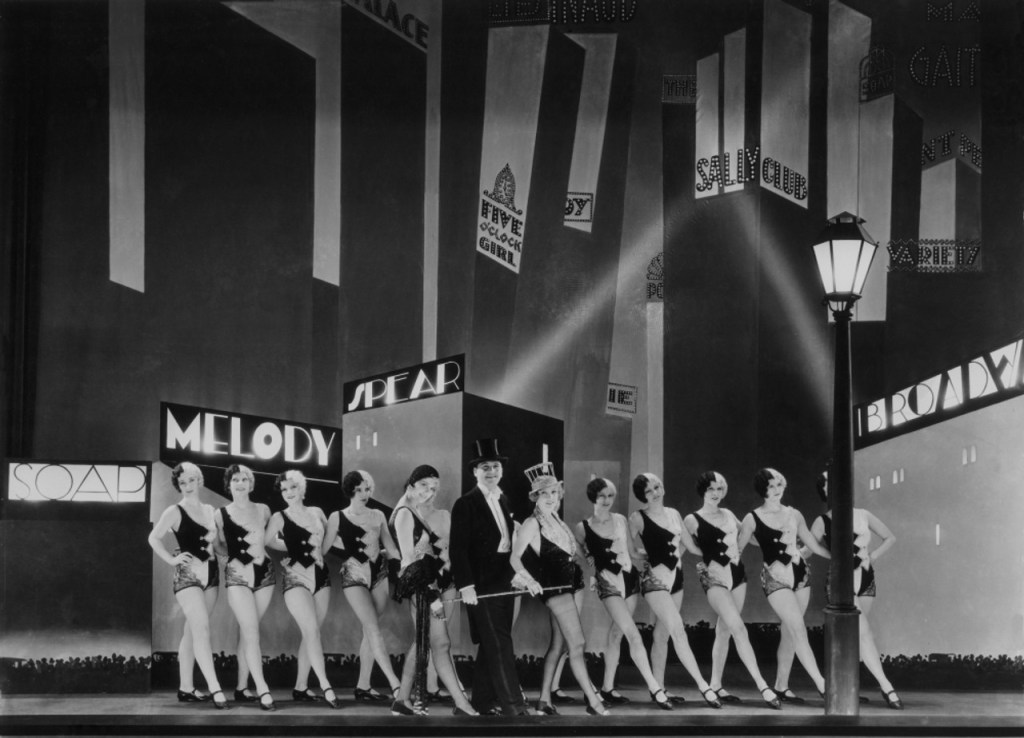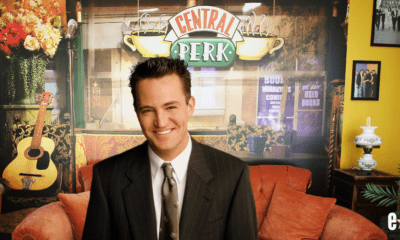Topics
The History of MGM Part 1: Holy Trinity of Hollywood


The lion roar was iconic. Their movies were the most spectacular. They were the most respected film studio in the country. There was a time when Metro-Goldwyn-Mayer represented the pinnacle of everything Hollywood did best. And yet the studio’s fall from grace may have been the biggest. Maybe their sensibility was too far removed from reality to survive during the counterculture-fused half of the 20th century. Maybe bigger budgets meant bigger debt troubles. Or maybe the people running the studio behind the scenes were more incompetent than the average film executive. Regardless of why they failed to thrive the way other studios like Warner Bros, Universal and Paramount did, their story is a fascinating one. Despite the odds, the studio is still around, and they are celebrating their 100th anniversary this year, so it’s worth looking into the studio’s history and seeing how they have managed to stay around for so long.
As you might have guessed by the studio’s name, MGM was established through the merger of three previous studios: Metro Pictures, Goldwyn Pictures and Louis B. Mayer Pictures.
Louis B. Mayer is the name most associated with MGM because he was the studio’s CEO for decades. But before that he started out as a theater owner, teaming up with Nathan H. Gordon to create the Gordon-Mayer Partnership, a company that owned the largest chain of movie theaters in New England. When Mayer made a deal with filmmaker D.W. Griffith to pay Griffith $25,000 for the exclusive rights to The Birth of a Nation (1915), Mayer ended up making $100,000 off the huge box office success of the landmark blockbuster. The wealth Mayer garnered from that endeavor led to a new partnership with Richard A. Rowland in 1916. Together with Rowland as president and George Grombacher as vice president, Mayer co-founded the film studio Metro Pictures.

Metro was primarily a distributor for production companies like Solax Studios, which was a small American studio founded by executives from the French film studio Gaumont as a way for France to capitalize on the popularity of cinema in the States.
That same year, Goldwyn Pictures was founded by Samuel Goldwyn, a co-founder of Lasky’s Feature Play Company (the studio that would later morph into Paramount Pictures). Goldwyn also worked with Solax Studios and often rented their production facilities. But Goldwyn struggled to break out with any hit movies and they worked with a series of partners in order to stay afloat, even purchasing Triangle Studios in Culver City, California and moving Goldwyn’s film production there. But moving to California just made production costs more expensive and Goldwyn was losing more money than they were making.

Meanwhile, after two years of working at Metro, Louis B. Mayer decided to move to Los Angeles and form his own studio, Louis B. Mayer Pictures Corporation. While Mayer did not have a great sense of what made good cinema from an artistic standpoint, by 1922 he successfully courted film producer Irving Thalburg away from Universal to be vice president of Mayer Pictures. Thalburg had a better sense of artistic quality and mining commercial success than Mayer so the partnership worked well. At least for a while.

The person responsible for bringing these three studios together as one company was a theater owner named Marcus Loew. In 1919, Loew decided to buy Metro Pictures, in order to provide a steady supply of films for his Loew’s theater chain. But Metro Pictures was not the hit maker Loew hoped it would be, so he additionally purchased Goldwyn Pictures to further increase his chain’s film output (in these days theaters were allowed to have exclusive partnerships with film studios, before it was eventually deemed too anti-competitive by the U.S. Supreme Court). But Loew was not a filmmaker, so he needed someone to oversee production at Loew’s new film studio, and that was where Louis B. Mayer came in.

Mayer agreed to head the new studio, which was established in 1924 with the new name Metro-Goldwyn-Mayer Studios. Mayer was MGM’s president and Irving Thalburg became MGM’s head of production, while New York City-based Loew’s Inc. would have final approval over the budgets and contracts at MGM’s Culver City-based production offices.
MGM had success right off the bat, with war drama The Big Parade (1925) and the epic Ben-Hur (1925) both released a year after the studio’s founding and both becoming huge hits. The Big Parade was praised for its realistic depiction of war and would go on to influence other war films like Universal’s All Quiet on the Western Front. Ben-Hur was expensive for its time and heavily promoted by MGM and it helped set a precedent at the studio that MGM would become known for. Mainly spectacle, glamour and high budgets. Although after the release of The Broadway Melody (1929) which was MGM’s first musical and Hollywood’s first musical talkie, as well as an early showcase for the Technicolor process, musicals became a huge part of MGM’s identity. The Broadway Melody was not only a box office hit but it won the Oscar for Best Picture and is one of the most influential musical films in Hollywood history.


MGM also had a huge stable of stars that the studio loved to capitalize on, among them Greta Garbo, Jean Harlow, Joan Crawford, Spencer Tracy, Mickey Rooney, Lionel Barrymore and Clark Gable. The exclusivity with these actors also helped raise MGM’s profile (and increase ticket sales). It also helped that MGM worked exclusively at various points with popular comedians like Buster Keaton, Laurel and Hardy and the Little Rascals, while films like Tarzan the Ape Man (1932), The Thin Man (1934) and Young Dr. Kildare (1938) kicked off long-running film series for MGM.
The 1930s were a successful decade for MGM. The musical biography The Great Ziegfeld (1936) became a landmark Hollywood musical for its elaborate numbers, costumes and choreography and, just like The Broadway Melody, this was another MGM musical that won the Oscar for Best Picture. Other classic hits from MGM that decade include Grand Hotel (1932), Mutiny on the Bounty (1935), A Night at the Opera (1935), Captains Courageous (1937), Boys Town (1938), The Wizard of Oz (1939), Babes in Arms (1939), Ninotchka (1939) and Gone with the Wind (1939) which, while it was a co-production with Selznick International Pictures, many people regard as MGM’s best film.




Even though Irving Thalburg had a huge impact on MGM’s identity during a successful period in the 1920s and early 1930s, Thalburg and Mayer eventually clashed too much in their tastes and their personalities to work together. Thalburg preferred prestige films and Mayer preferred family-oriented crowd pleasers, and since Mayer outranked Thalburg, Thalburg was fired in 1932. Mayer and a few of his trusted producers were left in charge of MGM, and while the 1930s were full of great films, no one else really had Thalburg’s touch or good judgment. Irving Thalburg later died in 1937.
The next decade would be a little bit of a different story. MGM’s highest point was the 1930s. Depression-era audiences were completely different from World War II-era audiences, and MGM’s identity was less in line with the spirit of the 1940s. Despite a few successes, MGM would become less adventurous and more bland and sequel heavy that decade as well. Still, there were some hits, including The Philadelphia Story (1940), Mrs. Miniver (1942), Lassie Come Home (1943), A Guy Named Joe (1943), Gaslight (1944), Bathing Beauty (1944), Meet Me in St. Louis (1944), National Velvet (1944), Easter Parade (1948) and On the Town (1949). In fact the success Gene Kelly had with On the Town even led to the even more highly regarded classics An American in Paris (1951) and Singin’ in the Rain (1952) which MGM also released.

The 1950s would be MGM’s last big hurrah in some ways. Many classics came out that decade. Including The Asphalt Jungle (1950) which introduced many people to Marilyn Monroe for the first time, as well as musicals like Annie Get Your Gun (1950), Seven Brides for Seven Brothers (1954) and Gigi (1958), which might be MGM’s last great musical. Not to mention the romantic comedy Father of the Bride (1950), social drama Blackboard Jungle (1955), sci-fi film Forbidden Planet (1956), Tennessee Williams play adaptation Cat on a Hot Tin Roof (1958), Hitchcock suspense thriller North by Northwest (1959) and the epic remake Ben-Hur (1959). The release of Ben-Hur in 1959 was truly a full-circle moment for MGM because the 1925 Ben-Hur and the 1959 Ben-Hur would kind of be the bookends for MGM’s period of success and mark the beginning of their downfall.

I’ll discuss the huge changes that came to MGM as a company in the sixties and the film studio’s status today in the second part of my article.




